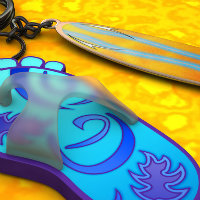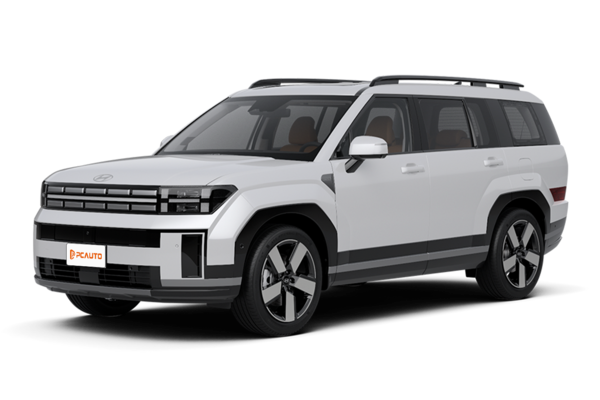Q
Does the 2019 Santa Fe have engine problems?
The 2019 Santa Fe delivers decent overall reliability, though some owners have reported oil dilution issues with the 2.4L Theta II engine—particularly during short trips in cold climates. Hyundai has issued technical service bulletins addressing this concern. The 2.0T gasoline and 2.2L diesel variants show lower failure rates, but always prioritize oil quality and change intervals during maintenance.
Keep an eye on the oil pressure warning light—Hyundai’s smart oil management system actively monitors engine health. If it pops up, get it checked ASAP.
When considering a midsize SUV like the Santa Fe, look beyond just the powertrain. Its HTRAC AWD provides solid wet-weather traction, and the fold-flat rear seats unlock a massive 1,600L cargo hold. Pro tip: Routine ECU scans with OEM diagnostic tools can catch gremlins before they turn into wallet-draining repairs.
Special Disclaimer: This content is published by users and does not represent the views or position of PCauto.
Related Q&A
Q
How many miles will a 2019 Santa Fe last?
The 2019 Santa Fe can typically last between 200,000 to 300,000 kilometers or more with proper maintenance—actual mileage depends on driving habits, road conditions, and service frequency. Its proven 2.4L or 2.0T engine options, paired with a 6-speed or 8-speed automatic transmission, deliver solid reliability. Staying on top of oil changes, transmission fluid, and filter replacements goes a long way in extending its lifespan.
The body structure uses high-strength steel with decent corrosion resistance, making it a good fit for our rainy climate. Still, it’s wise to get the underbody and suspension checked periodically for rust. For mixed driving conditions, a full service every 10,000 km is recommended. If you’re mostly doing short city trips, keep an eye out for carbon buildup.
Hyundai’s electronics have gotten more stable in recent years, but occasional software updates don’t hurt. Repair costs are reasonable for the segment, OEM parts are easy to find, and resale value is mid-pack. If you plan to keep it long-term, maintain complete service records—it’ll help with both performance and resale value down the road.
Q
How does the 2019 Santa Fe compare to other SUVs?
The 2019 Santa Fe strikes a solid balance in its segment, focusing on practicality and family needs. Its 2.2L diesel and 2.4L petrol engines deliver decent power and fuel efficiency, well-suited for local driving conditions. The third-row seating offers better flexibility than rivals like the Honda CR-V or Mazda CX-5, though its handling isn’t quite as sharp.
Safety-wise, it comes standard with seven airbags and Hyundai’s SmartSense suite—comparable to Toyota RAV4’s TSS system—but feels a step behind the Volkswagen Tiguan’s full-digital cockpit in tech appeal. Inside, soft-touch plastics dominate, with an 8-inch infotainment screen supporting Apple CarPlay. Space is tidier than the Kia Sorento’s, though not as sprawling.
Where it shines is value: the 5-year/unlimited-mile warranty beats most Japanese brands. Just note that resale value may lag behind them. A quick heads-up: your SUV choice should match your lifestyle. The diesel’s great for long hauls (though pricier to maintain), while hybrids suit city commutes better.
Q
What is the trade in value of a 2019 Hyundai Santa Fe?
The 2019 Hyundai Santa Fe typically holds a used car value between RM80,000 to RM120,000, depending on factors like condition, mileage, trim level, and service history. For example, the top-tier 2.4L Premium trim tends to command about RM15,000 more than the base model, while every additional 10,000 km on the odometer may drop the value by RM3,000 to RM5,000.
To get the most accurate quote, owners should check official certified pre-owned programs or professional valuation platforms. Keep in mind—full service records and genuine parts can significantly boost resale value. If you're eyeing a new car upgrade, some dealers offer trade-in bonuses, though these promotions usually tie into quarterly sales campaigns.
As a midsize SUV with strong local market presence, the Santa Fe’s reputation for reliability and affordable maintenance costs works in its favor. That said, fixing minor scratches or mechanical niggles before selling often pays off, as small investments can lead to better returns.
Q
How much does it cost to maintain a 2019 Santa Fe?
Based on the common maintenance items for the 2019 Santa Fe, a standard service—including an oil and filter change—typically runs between RM300 to RM500, depending on whether you use genuine or certified parts. At every 20,000 km, you’ll need to replace the air and cabin filters, which cost around RM200 to RM300. The major 40,000 km service involves checks and potential fluid replacements (like brake and transmission fluid), with total costs ranging from RM800 to RM1,200.
If you’re swapping all four tires for OEM-spec all-season ones, expect to pay roughly RM2,000 to RM3,000, though prices vary by brand. For hybrid models, battery inspections might add minor costs, but the battery pack itself usually comes with long-term warranty coverage.
Stick to the manual’s service schedule and keep records—it’s key for maintaining performance and resale value. Simple habits like checking tire pressure and fluid levels can also help curb long-term repair bills. Always opt for authorized service centers to ensure compliant parts and workmanship.
Q
Do 2019 Hyundai Santa Fe have transmission problems?
The 8-speed automatic transmission in the 2019 Hyundai Santa Fe delivers solid performance overall, though some owners have reported occasional mild jerking during low-speed gear changes. These cases typically stem from software calibration rather than mechanical issues, and most can be resolved with a transmission control module update at your dealership.
Hyundai's transmission tech has made significant strides in recent years—their wet dual-clutch and 8AT units now rival industry standards for smoothness. To maximize longevity, stick to the recommended maintenance schedule (transmission fluid changes every 60,000 km or as specified in your manual).
If you notice shifting irregularities, prioritize checking sensors or solenoid valves—these electronic components can be slightly more prone to issues in hot, humid climates. Early diagnosis prevents bigger headaches down the road. Worth noting: all automatic transmissions may exhibit delayed shift logic in heavy stop-and-go traffic as part of their protective programming. Using manual mode occasionally or highway driving helps keep things responsive.
For used-car shoppers, always scan for transmission trouble codes via OBD and test-drive across all speed ranges. Listen for unusual noises or slippage to rule out mechanical wear.
Q
How much horsepower does a 2019 Santa Fe 2.4 L have?
The 2019 Santa Fe's 2.4-liter naturally aspirated engine delivers 185 horsepower and 178 lb-ft of torque. Featuring GDI (Gasoline Direct Injection) technology, this powerplant improves fuel efficiency while reducing emissions. Paired with a 6-speed automatic transmission, it provides smooth power delivery that's well-suited for daily driving.
For those seeking more punch, Santa Fe also offers an optional 2.0-liter turbocharged engine, churning out 235 horsepower—ideal for drivers who prefer stronger acceleration. As a midsize SUV, its powertrain is tuned to balance city commuting with occasional long-distance travel, while the suspension is optimized for comfort, making it a solid choice for families.
Keep in mind that engine performance may degrade over time depending on maintenance. Regular oil changes and air filter replacements help preserve optimal output. Given Malaysia's tropical climate, pay extra attention to cooling system maintenance—check coolant levels and radiator fans periodically to ensure efficient engine operation.
Q
What kind of transmission is in the 2019 Hyundai Santa Fe?
The 2019 Hyundai Santa Fe offers two transmission options depending on trim. Front-wheel-drive models come with a conventional 6-speed automatic (6AT), while all-wheel-drive versions get a more advanced 8-speed automatic (8AT). Both transmissions are known for smooth shifts and reliability. The 6AT is a proven workhorse with lower maintenance costs—ideal for daily city driving. The 8AT's extra gears help optimize fuel efficiency during highway cruising, making it better suited for long trips or situations requiring extra traction.
Hyundai typically pairs these transmissions with drive mode select (Eco, Normal, Sport), letting drivers adjust shift logic as needed. Worth noting: Transmission performance also hinges on engine tuning. Both the Santa Fe's 2.4L and 2.0T engines are well-matched to these gearboxes, delivering linear power delivery.
For longevity, stick to fluid changes every 60,000–80,000 km—or sooner if you frequently crawl through stop-and-go traffic. Hyundai's recent transmission tech focuses on boosting efficiency, with later models increasingly using electronic controls for sharper response.
Q
What is the difference between 2019 Santa Fe SE and SEL?
The 2019 Santa Fe SE and SEL mainly differ in features and comfort-oriented upgrades. The base SE trim comes with 17-inch wheels, cloth seats, manual AC, and a 7-inch infotainment screen. Stepping up to the SEL gets you 18-inch alloys, a leather-wrapped steering wheel, dual-zone automatic climate control, an 8-inch touchscreen, plus safety tech like blind-spot monitoring. Some SEL models may add power-adjustable seats and a panoramic sunroof.
Both trims typically share either the 2.4L or 2.0T engine, though output might vary slightly by region. For budget-focused buyers, the SE covers daily needs just fine, while the SEL caters better to those wanting extra comfort and tech.
FYI, Hyundai’s tiered trim strategy—similar to rivals like the Honda CR-V or Toyota RAV4—aims to suit different budgets. A quick pro tip: test-drive both to feel the differences, and remember that higher trims often hold slightly better resale value in the used market.
Q
How much is a Hyundai Santa Fe 2019?
The 2019 Hyundai Santa Fe's price varies by trim and condition. When new, it retailed around RM180k-RM220k. On the used market today, expect to pay RM120k-RM160k depending on mileage and maintenance history.
This seven-seater remains popular for its spacious cabin, generous features, and dependable powertrains—especially the 2.2L diesel variant that balances punchy performance with decent fuel efficiency, making it a solid family hauler.
Pro tip: Always check service records before buying. Opt for models equipped with Hyundai’s SmartSense suite (adaptive cruise, lane-keeping assist, etc.)—these safety techs are game-changers. For peace of mind, consider factory-certified pre-owned units that often include extended warranty coverage.
Heads-up: The 2019 facelift bumped up the infotainment screen size and added connected car tech. These tweaks matter for daily usability and resale value, so keep an eye out when comparing used examples.
Q
Is the 2019 Hyundai Santa Fe good on gas?
The 2019 Hyundai Santa Fe delivers decent fuel efficiency for its class. Powered by either a 2.4L four-cylinder or a 2.0L turbocharged engine—both featuring Hyundai’s smart fuel-saving tech—it posts an official combined rating of around 8-9L/100km. That’s pretty thrifty for a midsize SUV, especially in city driving where its auto start-stop system helps cut idle fuel waste. Opt for the diesel variant, and you’ll get even better mileage, making it a solid pick for long hauls.
The Santa Fe also comes with selectable drive modes, including an Eco setting to squeeze out extra miles per gallon. Beyond fuel economy, it shines with spacious, family-friendly comfort and reasonable maintenance costs, plus good parts availability. Pro tip: Keep your tires properly inflated, avoid jackrabbit starts, and ease off the brakes to stretch your fuel budget further.
In this segment, the Santa Fe’s efficiency sits above average—a practical choice for buyers who want value without guzzling gas.
Latest Q&A
Q
How many miles will a 2019 Santa Fe last?
The 2019 Santa Fe can typically last between 200,000 to 300,000 kilometers or more with proper maintenance—actual mileage depends on driving habits, road conditions, and service frequency. Its proven 2.4L or 2.0T engine options, paired with a 6-speed or 8-speed automatic transmission, deliver solid reliability. Staying on top of oil changes, transmission fluid, and filter replacements goes a long way in extending its lifespan.
The body structure uses high-strength steel with decent corrosion resistance, making it a good fit for our rainy climate. Still, it’s wise to get the underbody and suspension checked periodically for rust. For mixed driving conditions, a full service every 10,000 km is recommended. If you’re mostly doing short city trips, keep an eye out for carbon buildup.
Hyundai’s electronics have gotten more stable in recent years, but occasional software updates don’t hurt. Repair costs are reasonable for the segment, OEM parts are easy to find, and resale value is mid-pack. If you plan to keep it long-term, maintain complete service records—it’ll help with both performance and resale value down the road.
Q
How does the 2019 Santa Fe compare to other SUVs?
The 2019 Santa Fe strikes a solid balance in its segment, focusing on practicality and family needs. Its 2.2L diesel and 2.4L petrol engines deliver decent power and fuel efficiency, well-suited for local driving conditions. The third-row seating offers better flexibility than rivals like the Honda CR-V or Mazda CX-5, though its handling isn’t quite as sharp.
Safety-wise, it comes standard with seven airbags and Hyundai’s SmartSense suite—comparable to Toyota RAV4’s TSS system—but feels a step behind the Volkswagen Tiguan’s full-digital cockpit in tech appeal. Inside, soft-touch plastics dominate, with an 8-inch infotainment screen supporting Apple CarPlay. Space is tidier than the Kia Sorento’s, though not as sprawling.
Where it shines is value: the 5-year/unlimited-mile warranty beats most Japanese brands. Just note that resale value may lag behind them. A quick heads-up: your SUV choice should match your lifestyle. The diesel’s great for long hauls (though pricier to maintain), while hybrids suit city commutes better.
Q
What is the trade in value of a 2019 Hyundai Santa Fe?
The 2019 Hyundai Santa Fe typically holds a used car value between RM80,000 to RM120,000, depending on factors like condition, mileage, trim level, and service history. For example, the top-tier 2.4L Premium trim tends to command about RM15,000 more than the base model, while every additional 10,000 km on the odometer may drop the value by RM3,000 to RM5,000.
To get the most accurate quote, owners should check official certified pre-owned programs or professional valuation platforms. Keep in mind—full service records and genuine parts can significantly boost resale value. If you're eyeing a new car upgrade, some dealers offer trade-in bonuses, though these promotions usually tie into quarterly sales campaigns.
As a midsize SUV with strong local market presence, the Santa Fe’s reputation for reliability and affordable maintenance costs works in its favor. That said, fixing minor scratches or mechanical niggles before selling often pays off, as small investments can lead to better returns.
Q
How much does it cost to maintain a 2019 Santa Fe?
Based on the common maintenance items for the 2019 Santa Fe, a standard service—including an oil and filter change—typically runs between RM300 to RM500, depending on whether you use genuine or certified parts. At every 20,000 km, you’ll need to replace the air and cabin filters, which cost around RM200 to RM300. The major 40,000 km service involves checks and potential fluid replacements (like brake and transmission fluid), with total costs ranging from RM800 to RM1,200.
If you’re swapping all four tires for OEM-spec all-season ones, expect to pay roughly RM2,000 to RM3,000, though prices vary by brand. For hybrid models, battery inspections might add minor costs, but the battery pack itself usually comes with long-term warranty coverage.
Stick to the manual’s service schedule and keep records—it’s key for maintaining performance and resale value. Simple habits like checking tire pressure and fluid levels can also help curb long-term repair bills. Always opt for authorized service centers to ensure compliant parts and workmanship.
Q
Do 2019 Hyundai Santa Fe have transmission problems?
The 8-speed automatic transmission in the 2019 Hyundai Santa Fe delivers solid performance overall, though some owners have reported occasional mild jerking during low-speed gear changes. These cases typically stem from software calibration rather than mechanical issues, and most can be resolved with a transmission control module update at your dealership.
Hyundai's transmission tech has made significant strides in recent years—their wet dual-clutch and 8AT units now rival industry standards for smoothness. To maximize longevity, stick to the recommended maintenance schedule (transmission fluid changes every 60,000 km or as specified in your manual).
If you notice shifting irregularities, prioritize checking sensors or solenoid valves—these electronic components can be slightly more prone to issues in hot, humid climates. Early diagnosis prevents bigger headaches down the road. Worth noting: all automatic transmissions may exhibit delayed shift logic in heavy stop-and-go traffic as part of their protective programming. Using manual mode occasionally or highway driving helps keep things responsive.
For used-car shoppers, always scan for transmission trouble codes via OBD and test-drive across all speed ranges. Listen for unusual noises or slippage to rule out mechanical wear.
View MoreRelated News

In Malaysia, which sliding door MPVs are available?
MichaelOct 30, 2025

Modern Ioniq 5 N Lands in Malaysia: Track-Level Performance Electric Vehicle is Here, Priced Possibly Below RM 400,000?
JohnSep 10, 2025

Hyundai's Big Return to Malaysia: Top 5 Models Expected
MichaelMay 30, 2025

580,000 km & 87.7% Battery Health: Ioniq 5’s Incredible Durability
MichaelMay 6, 2025

Revolutionizing Hybrids: Hyundai’s New System vs. Toyota's Hybrid System
Kevin WongApr 22, 2025
View More













Pros
Cons